2022.10.12
CULTUREInternational Art Exhibitions in Venice and Yokohama Bring Together Art and its Aficionados from around the World

The Japan Pavilion designed by YOSHIZAKA Takamasa, which stands at the Giardini, the venue for the Venice Biennale. The building was renovated by ITO Toyo in 2014. Photo by Peppe Maisto
The Japan Pavilion exhibition at the “Venice Biennale,” which attracts worldwide attention, has been a major project of the Japan Foundation since 1976. Using our participation in Venice as a springboard, we participated in the launch of the “Yokohama Triennale” in 2001.
The Venice Biennale is also known as the “Olympics of Art.” This international exhibition began in 1895 and operates a national participation system. Japan participated for the first time during the 26th exhibition in 1952, marking its return to the international art world. The exhibition organizer of the Japan Pavilion was the Japan Foundation’s (JF) predecessor, the Society for International Cultural Relations (Kokusai Bunka Shinkokai). Since then, Japan has continuously participated in the Venice Biennale, and from 1976, JF has organized exhibitions in the Japan Pavilion. On the international stage, which attracts people from all over the world, we present cutting-edge contemporary art from Japan through exhibitions by representative Japanese artists.
Expectations of a More Open Platform for the Japan Pavilion
The Artistic Director of MAXXI, the National Museum of 21st Century Arts in Italy, Mr. Hou Hanru has been paying close attention to the Japan Pavilion since the 1990s. Mr. Hou describes his impression of the Japan Pavilion as follows: “In general, it reflects the current state of contemporary art both in Japan and internationally. MIYAJIMA Tatsuo’s work in 1999 using digital counters embodied the atmosphere of the 90s, portraying creativity emphasizing the role of new technologies in contemporary Japanese and global culture. Also, TANAKA Koki’s 2013 work proved a lively collaboration of video and photography, and the excellent use of the atrium space in the Japan Pavilion was impressive.”
Mr. Tanaka’s exhibition at the Japan Pavilion in 2013 was highly acclaimed, and in 2017 he was invited to participate in the Biennale’s special exhibition. One’s reputation at Venice is also directly connected to one’s global reputation, as evidenced by ISHIDA Tetsuya, who was invited to participate in the 2015 exhibition and was “discovered” in Venice, leading to his solo exhibitions in Madrid and Chicago.
Mr. Hou expressed his hopes for the future of the Japan Pavilion saying, “I think art is an open platform. So, I don’t see art as having anything to do with competition. Art is all about helping society to be more open towards different people, cultures and so on. There are so many wonderful artists with different backgrounds working in Japan, and we hope to be able to see how they can present their special angles to look at global issues.”
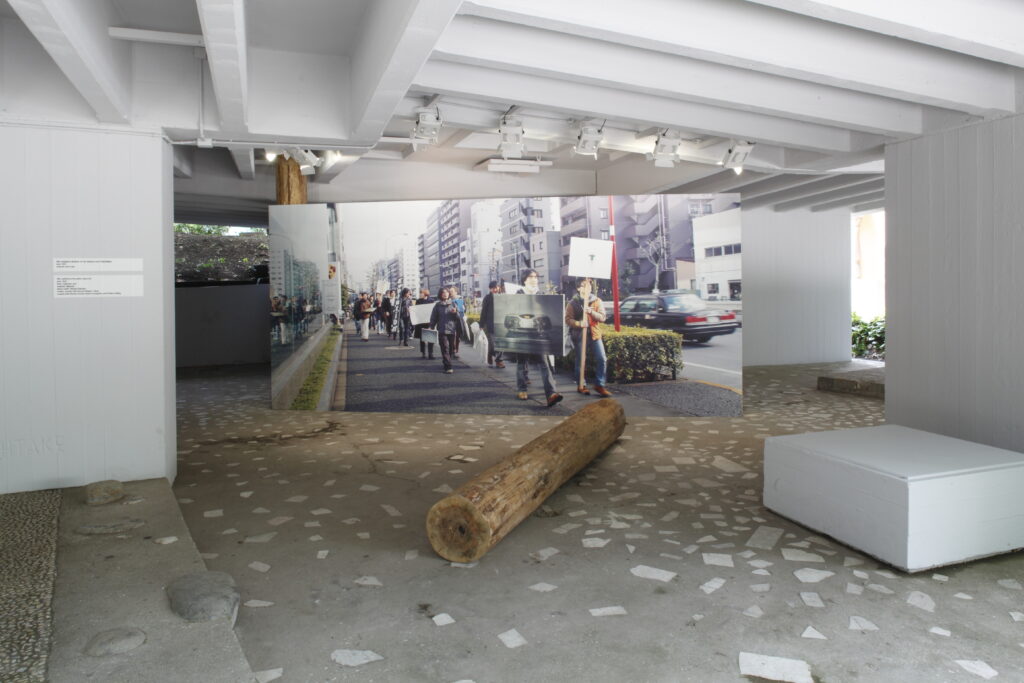
TANAKA Koki’s work on display at the Japan Pavilion in 2013. Mr. Tanaka exhibited an installation titled, “abstract speaking – sharing uncertainty and collective arts,” in which video monitors and photographic works are placed here and there, while flashlights and books, etc. that appear in the video footage are scattered throughout the venue. The exhibition at the Japan Pavilion received a Special Mention. Exhibition at the piloti “painting to the public (open-air),” 2012 Photo: Takashi Fujikawa, created with Aoyama Meguro, Photo: Keizo Kioku
In addition to the art section, the Venice Biennale initiated the International Architecture Exhibition in 1980, and since 2001, it has alternated with the art exhibition every two years. Japan has been an official participant since the fifth exhibition in 1991, winning the Golden Lion award in 1996, when ISOZAKI Arata served as commissioner, and in 2012, when ITO Toyo served as commissioner. Ito exhibited the process of creating “Home-for-All,” a place where those who lost their homes in the tsunami could enjoy a little respite in Rikuzentakata City, which was severely damaged by the Great East Japan Earthquake. This exhibition, “Architecture. Possible here? Home-for-All,” was highly evaluated for its courage and importance in questioning the fundamental meaning of architecture through how it deals with natural disasters.
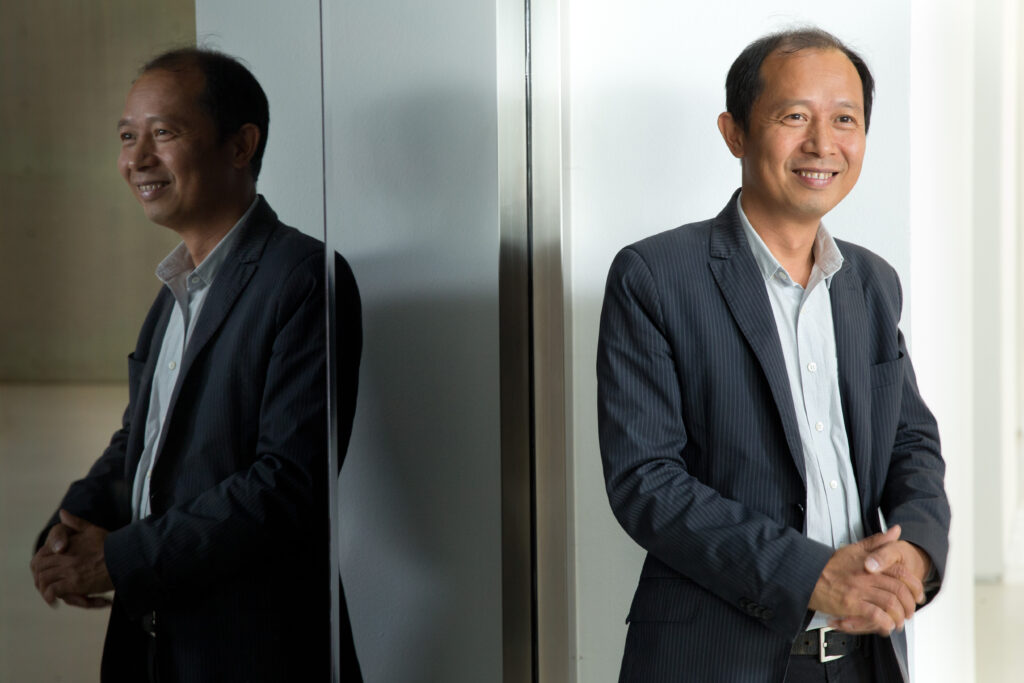
Mr. Hou Hanru. Artistic Director of MAXXI, the National Museum of 21st Century Arts, Italy. In 1991, he became involved with the Venice Biennale when serving as co-curator of the French Pavilion. He was a member of the International Committee for the 2008 Yokohama Triennale. Photo: ©Musacchio&lanniello
The Venice Experience Lives on in Yokohama
An art critic and a senior advisor to the Mori Art Museum, Mr. NANJO Fumio is also well acquainted with JF’s involvement with the Venice Biennale. “I worked at JF from 1978 to 1986, serving as program director for the exhibition program. From that time on, I was in the middle of a conflict between the Japan that foreign countries wanted to see and the Japan that Japan itself wanted to show. I was busy with the internationalization of Japanese contemporary art as the two sides’ intentions clashed,” he said.

Mr. NANJO Fumio. Senior Advisor of the Mori Art Museum and art critic. He has been involved in numerous international art projects to date, including co-curating “Against Nature: Japanese Art in the Eighties,”which traveled to seven U.S. cities as a JF co-organized exhibition.
Mr. Nanjo’s encounter with the Venice Biennale dates back to his days at JF, when he was in charge of the Japan Pavilion exhibition in 1984 as a staff member. In 1988, after leaving JF, he was the first Asian curator of the Aperto (now discontinued), a gateway to success for new artists, and in 1995, in celebration of the 100th anniversary of the Biennale, he co-curated the exhibition “TransCulture: La Biennale di Venezia 1995” with Dana Friis-Hansen, featuring MURAKAMI Takashi and up-and-coming artists from dozens of countries around the world. It was co-organized by JF and the Fukutake Science and Culture Foundation and officially supported by the Biennale. He also served as commissioner of the Japan Pavilion in 1997 and the NAITO Rei exhibit received high international acclaim.
While participation in international exhibitions in Venice and other countries has expanded the international activities of Japanese artists, there have also been calls for Japan to have its own international venues. In response, JF took the lead in organizing the first “Yokohama Triennale 2001.” 109 artists from 38 countries, including Japan, participated. Mr. Nanjo was an artistic director of the exhibition, along with KOHMOTO Shinji, TATEHATA Akira and NAKAMURA Nobuo.
The Yokohama Triennale 2001 came together under the theme of “MEGA WAVE – Towards a New Synthesis,” with the aim of positioning contemporary art within society at large. It promoted mutual understanding and dialogue between citizens, a varied audience, and artists from Japan and abroad, without being confined to the framework of contemporary art, while contributing to the revitalization of urban communities. As a result, large-scale exhibitions appeared in various locations throughout Yokohama, including facilities that had not been associated with art exhibitions in the past, such as Pacifico Yokohama convention center and Red Brick Warehouse No. 1. “I’ll never forget overhearing an elderly person commenting that even the trash on the side of the road looked like art. In selecting the artworks, we challenged the Western-centric view of art by choosing them with our own eyes and showing them the choices and decisions we made. The lively discussions that took place in preparation for the event are an asset that remain with us to this day. Our experience in Venice is definitely alive and well in Yokohama,” affirmed Mr. Nanjo.
The Yokohama Triennale is a stage for international presentations and a place to disseminate information on Japanese art to the world. At each Triennale, Japanese artists participate along with foreign artists. One such artist is Ms. SHIOTA Chiharu, who participated in the first Triennale and is now based in Germany. Ms. Shiota recalls, “When Mr. Tatehata came to Berlin for his research, I was just exhibiting my work at a museum there and he approached me. I was 27 years old, and I remember how happy I was to have the opportunity to exhibit on a large stage for the first time ever. I was working on a piece about memory, so I wanted to express memories from the skin that could not be washed away by continually showering 14-meter large mud-stained dresses.”
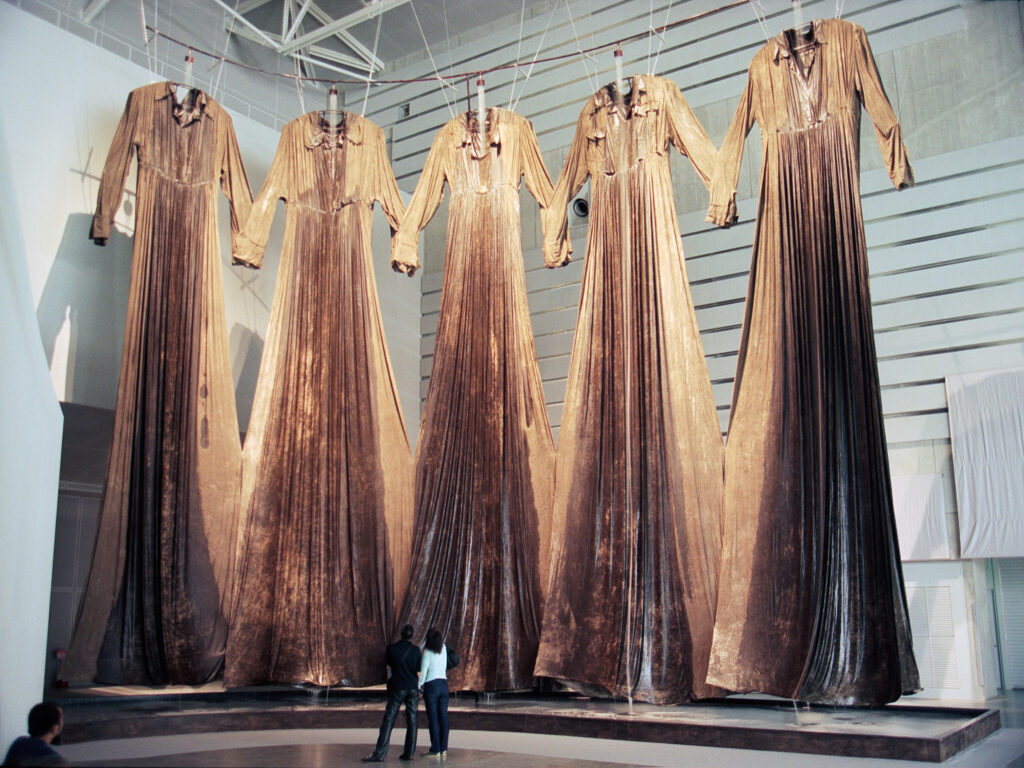
The first Yokohama Triennale attracted approximately 350,000 visitors during its two-month duration. The photo shows the exhibits mentioned by Ms. Shiota. Chiharu Shiota, Memory of Skin, 2001. Installation: dresses, dirt, water, showers. Yokohama 2001 – International Triennale of Contemporary Art: Mega Wave – Towards a New Synthesis, Yokohama, Japan. Photo by ITO Tetsuo ©JASPAR, Tokyo, 2022 and Chiharu Shiota.
The exhibited work, “Memory of Skin,” mentioned by Ms. Shiota will remain in the memories of many people along with its overwhelming power, and she is now one of the most prominent artists on the international art scene. In 2015, she was selected to represent Japan at the Venice Biennale, and her installation “The Key in the Hand,” a red string installation of 180,000 keys collected from around the world and tied together, received great acclaim. Furthermore, “Shiota Chiharu: The Soul Trembles” held at the Mori Art Museum in Tokyo in 2019 attracted 660,000 visitors. The exhibition has since traveled throughout the Asia-Pacific region and recently to the Queensland Art Gallery | Gallery of Modern Art (QAGOMA) in Brisbane, Australia in 2022.
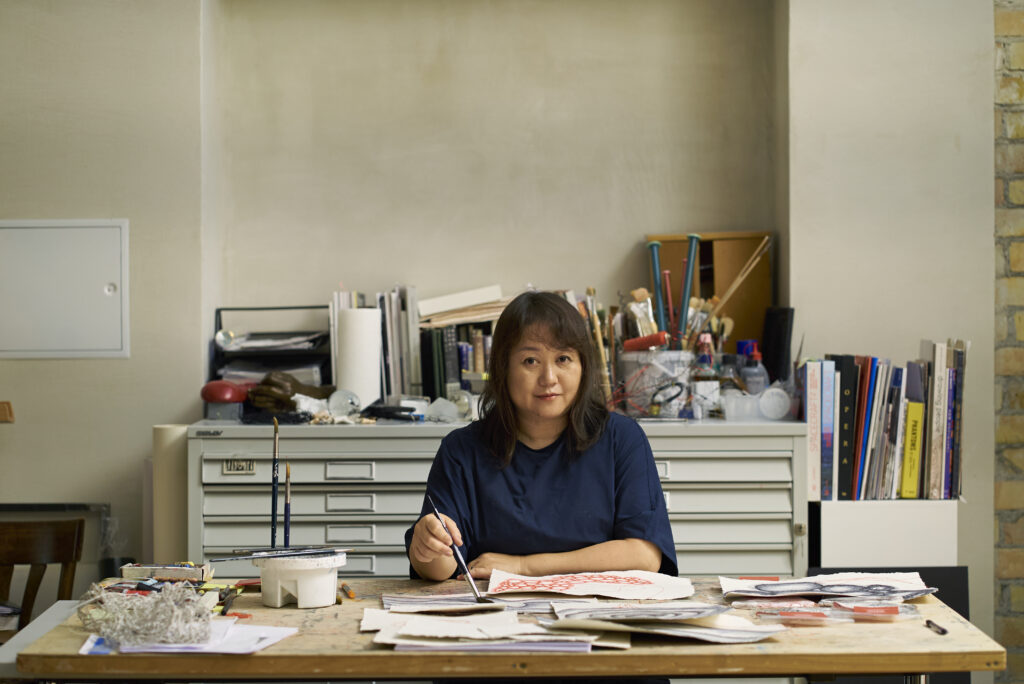
Ms. Shiota is an artist born in Osaka and living in Berlin. “I believe that art is something that can be shared beyond language and national borders, and that it can create a dialogue where nationality and gender are irrelevant,” she says. Shiota Chiharu – Berlin, 2020 Photo by Sunhi Mang
Artists and professionals in the artistic and architectural fields continue to engage in dynamic international exchanges at the Venice Biennale and other major international art exhibitions. JF will continue to convey the appeal of Japanese art and architecture to the world, not only by collaborating on such exhibitions, but also by supporting the artists’ continuing evolution.
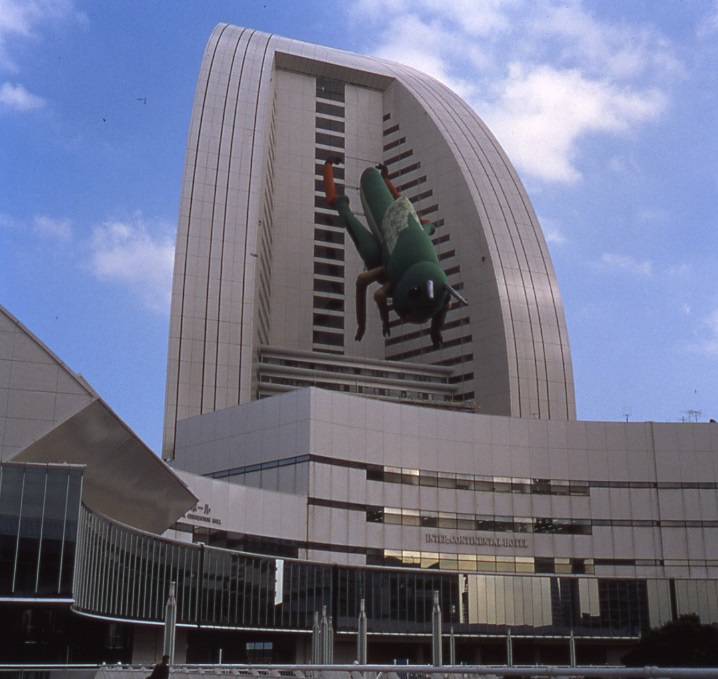
A giant 35-meter-long grasshopper that appeared on the exterior wall of the Yokohama Grand Intercontinental Hotel during the first Yokohama Triennale. Tsubaki Noboru + Muroi Hisashi The Insect World / Locust 2001 photo: Kurokawa Mikio
【Related page】
Three Exhibitions Opening Up New Dimensions; Japanese Art and Architecture as Perceived by Overseas Curators
